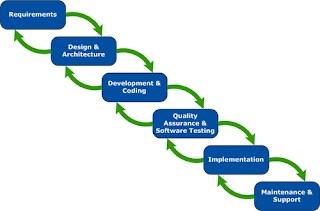The below article will also be available on the Simplilearn Website
Critical Chain Project Management
was developed and publicized by Dr. Eliyahu M. Goldratt in 1997. Followers of
this methodology of Project Management claim it to be an alternative to the
established standard of Project Management as advocated by PMBOK® and other Standards of
Project Management. This article
attempts to provide a brief overview of the Principals of Critical Chain
Project Management and its applicability to manage Projects across all
organizations and verticals.
The
Critical Chain Method has its roots in another one of Dr. Goldratt’s inventions
viz The Theory of Constraints (TOC). This Project Management Method comes into
force after the initial Project Schedule is prepared, which includes establishment
of the task dependencies. The evolved
Critical path is reworked based on the Critical Chain Method. To do so, the
methodology suggests and assumes constraints related to each task. A few of
them are elaborated as under.
Ø
There is a certain amount of uncertainty in each
task
Ø
The task Durations are overestimated by the Team
Members or Task Owners. This is typically done to add a safety margin to the
task so as to be certain of its completion in the decided duration.
Ø
In most cases, the tasks should not take the
time estimated, which includes the safety margin, and should be completed
earlier.
Ø
If the Safety Margin assumed is not needed, it
is actually wasted. If the task completes earlier, it may not necessarily mean that
the successor task can start earlier as the resources required for the
successor task are not available until their schedule time. Hence the saved
time cannot be passed on to finish the Project early. On the other hand, if
there are delays over and above the estimated schedules, these delays will most
definitely get passed on, and in most of the cases, will exponentially increase
the Project Schedule.
With the above assumptions, the
Critical Path Methodology of Project Management recommends pooling of the task
buffers and adding them at the end of the Critical path.
The Critical Path Project Management
defines 3 types of Buffers
1.
Project Buffer - The
total pooled buffer shown above(Fig 1.1) is referred to as the Project Buffer
2.
Feeding Buffer - In a Project Network there are path/s which feed into the
Critical path. The pooled buffer on each such path represents the Feeding Buffer
to the Critical Path(Fig1.2) resulting in providing some slack to the critical
Path.
3.
Resource Buffer- This
is a virtual task inserted just prior to critical chain tasks that require
critical resources. This acts as a trigger point for the resource indicating
when the critical path is about to start.
As the Progress of the Project is reported the Critical Chain is
recalculated. In fact, monitoring and controlling of the Project primarily
focusses on utilization of the Buffers. Hence the Critical Chain Method, takes
in the basic Critical Path based Project Network and Schedule and derives a
completely new Schedule.
The Critical Path Project Management Methodology proves to be very
effective in organizations, which do not have evolved Project Management
Practices. Also, it is seen that the methodology does not advocate
multi-tasking and hence in Projects with complex Schedule Networks, the results
of implementing the Critical path Methodology have proven to be deterrent to
the overall Project Schedule. Additionally, there is no standard method which
has evolved for calculating and optimizing the Project Buffers. The Critical
Path Project Management Methodology has had a fair amount of success in
Manufacturing domains though it has not achieved any noteworthy success in IT
Sector.
Similar in lines with the principals of Critical
Chain Methodology, the Event Chain Methodology of Project Management focusses
on determining the uncertain events and the chain Reactions they propagate. It
is a method of modelling uncertainties and is based on Monte Carlo Analysis, Bayesian
Believe Network and other established simulation methodologies. Events when
occurred can cause other events triggering an Even Chain, which will
effectively alter the course of the Project. Events and Event Chains are identified
and a Quantitative Analysis is performed to determine the extent of the
uncertainty and the probable impact of the same on the Project. From this
exercise, Critical Event Chains are evolved which have the potential to cause
the most impact on the Project. Event Chain diagrams are visual representation
of the Event and Event Chains and their impact.
It is clear that the neither the
Critical Path Project Management Methodology nor the Event Chain Methodology
can be considered as alternatives to the standard Methodology for project
Management as advocated by PMBOK®.
While the Critical Path Project Management Methodology can be at best
used as a tool for deriving Project Schedule networks, the Event Chain
Methodology for Project Management can be used as a tool for Quantitative Risk Analysis.
Yogeeta
Deshmukh BE, ITIL, PMP















